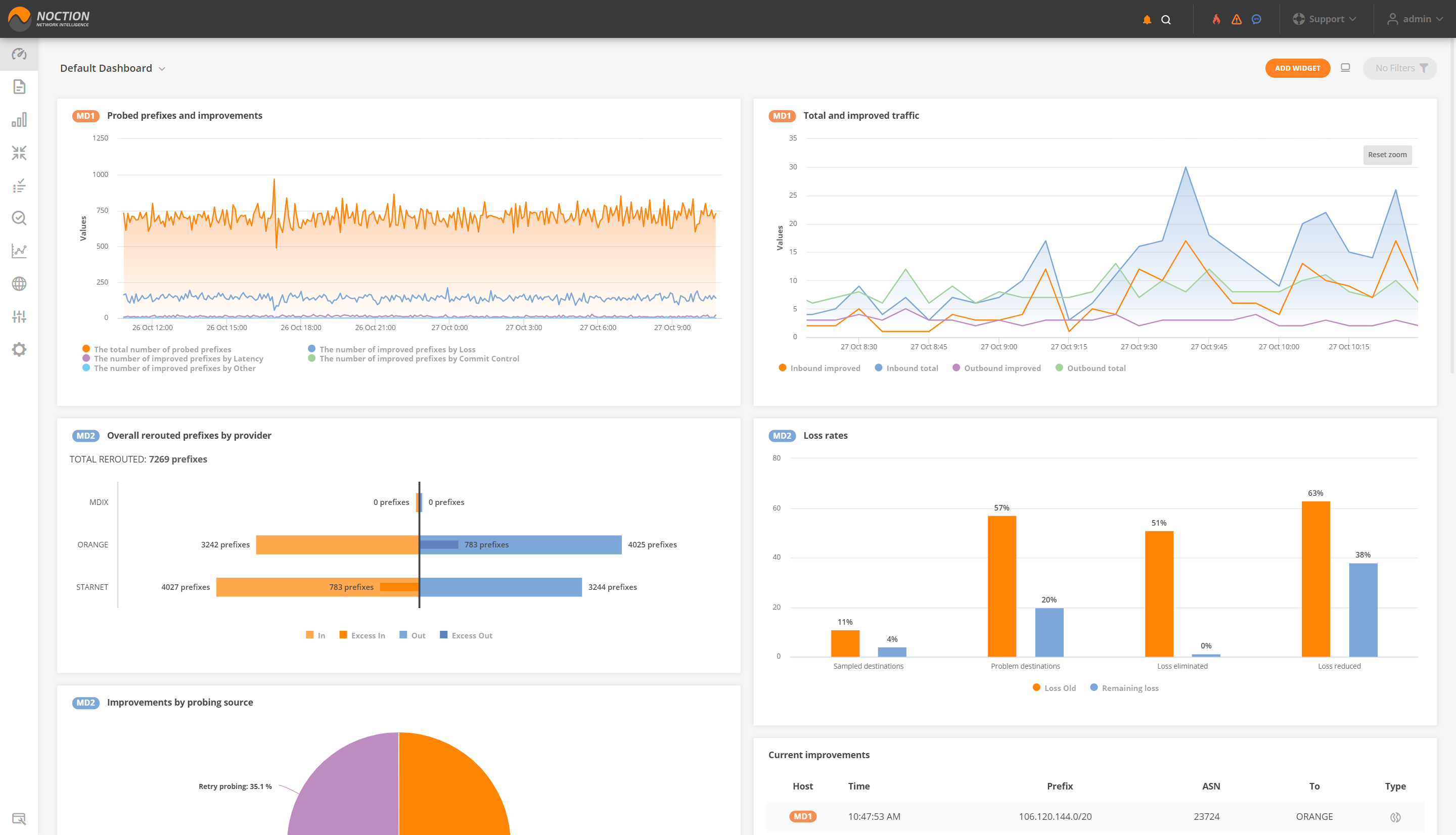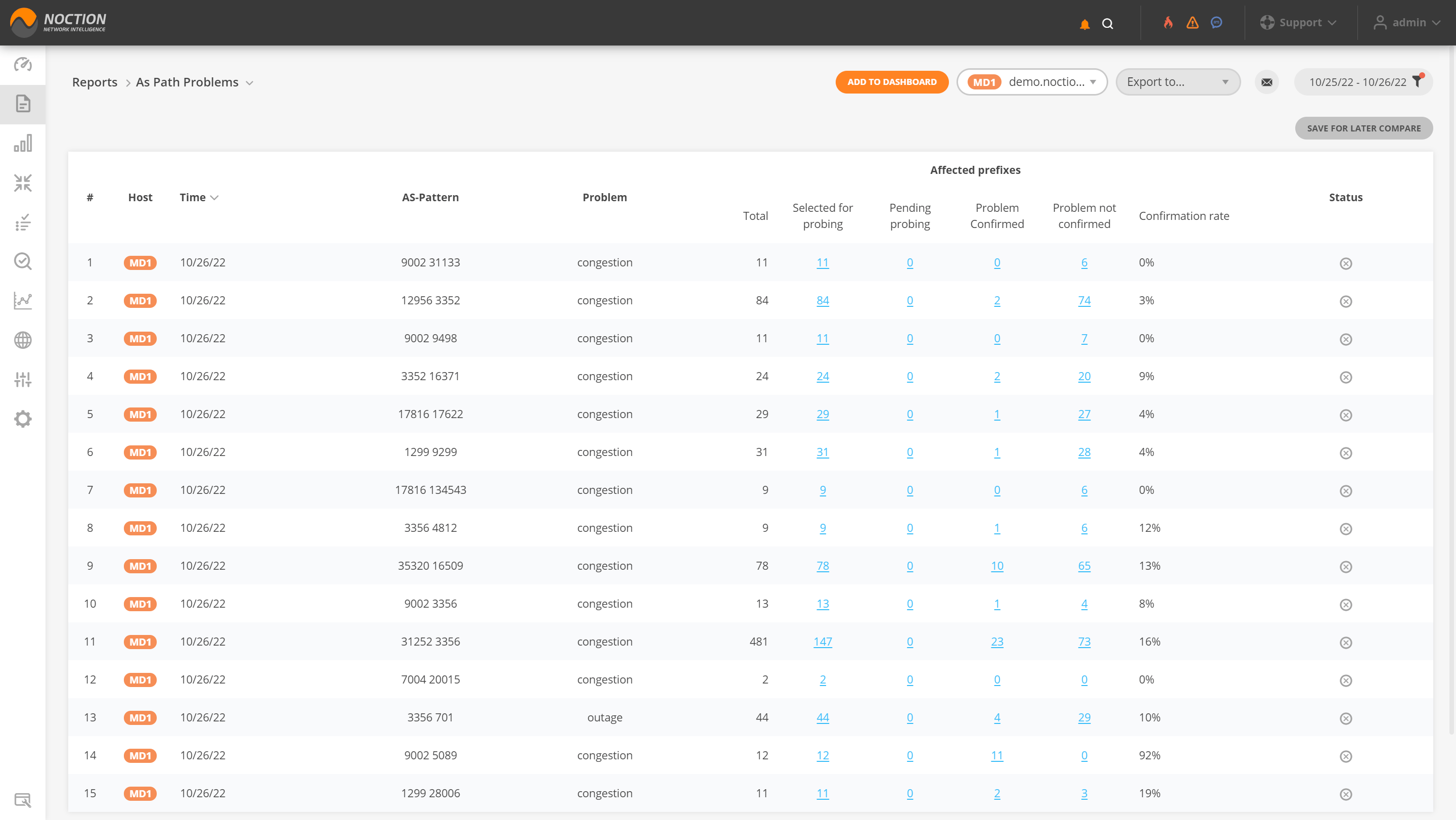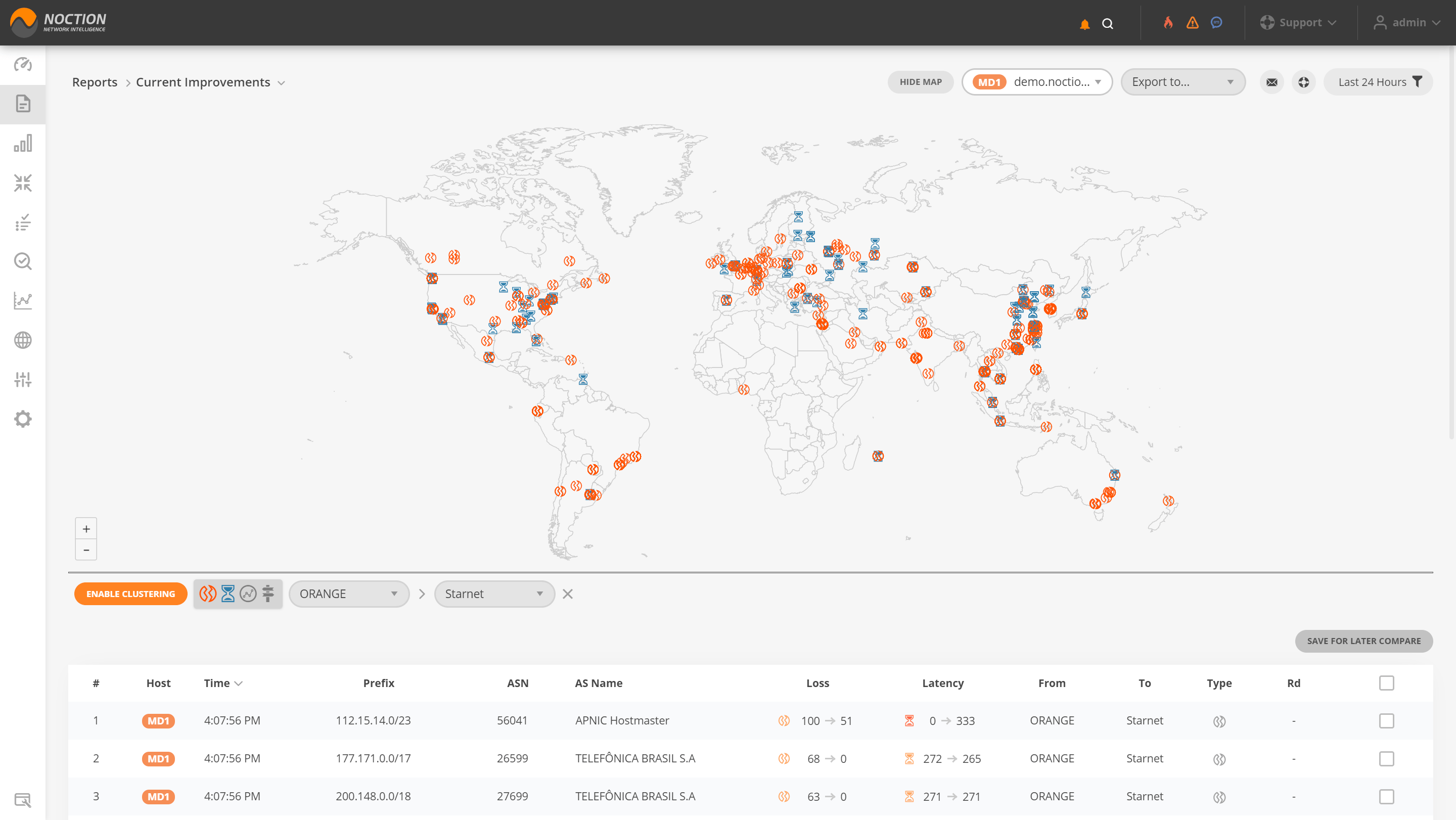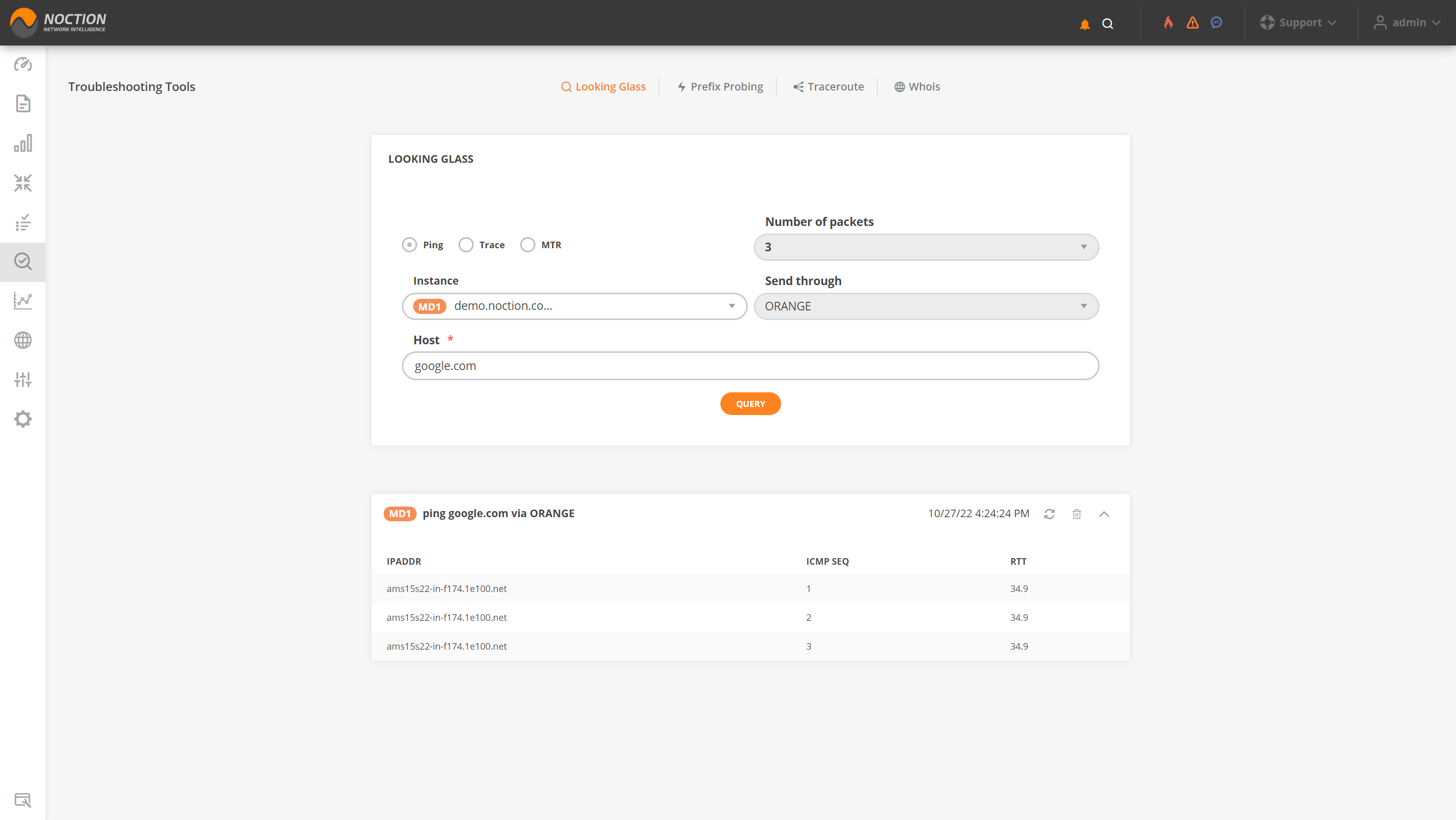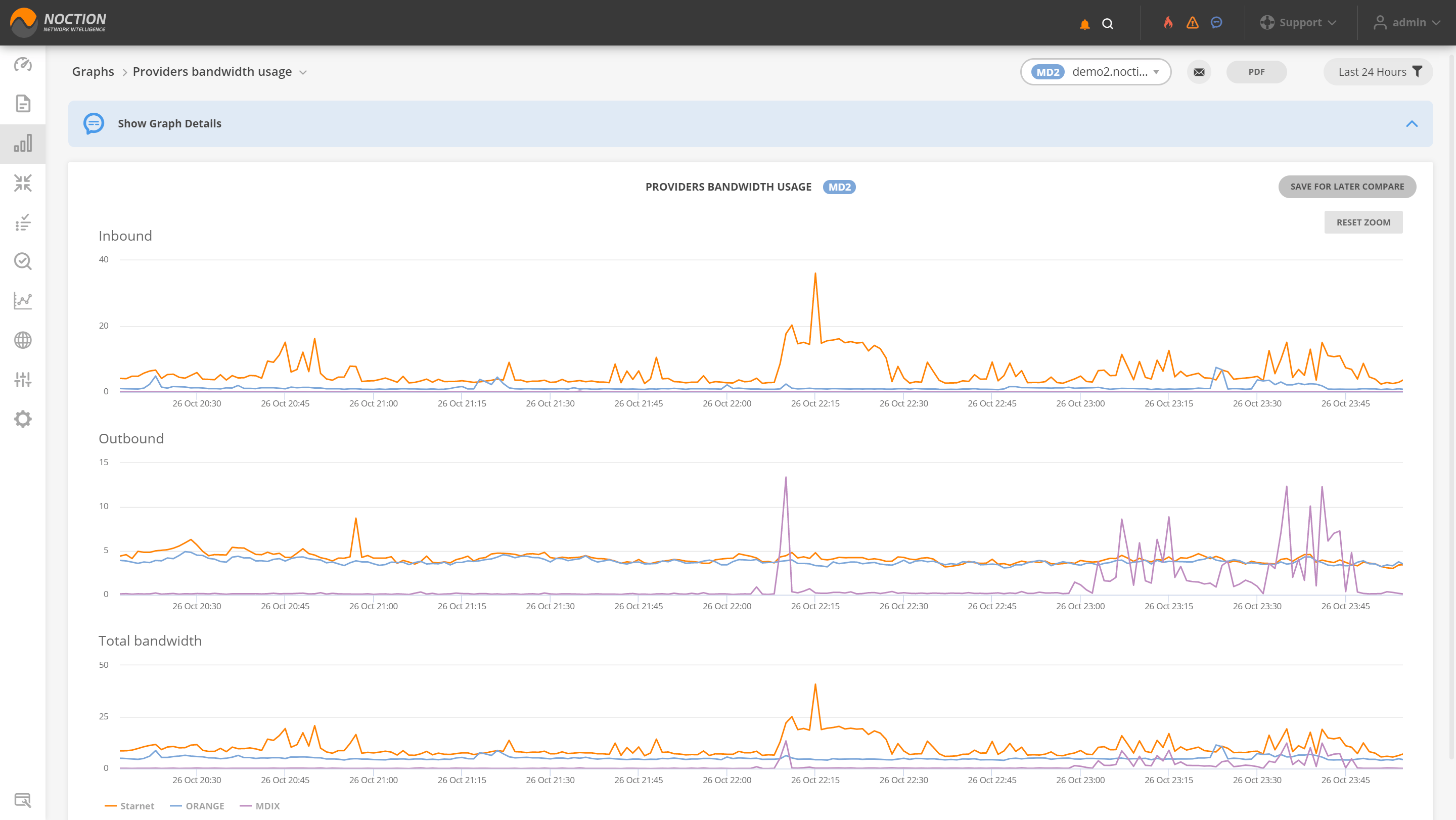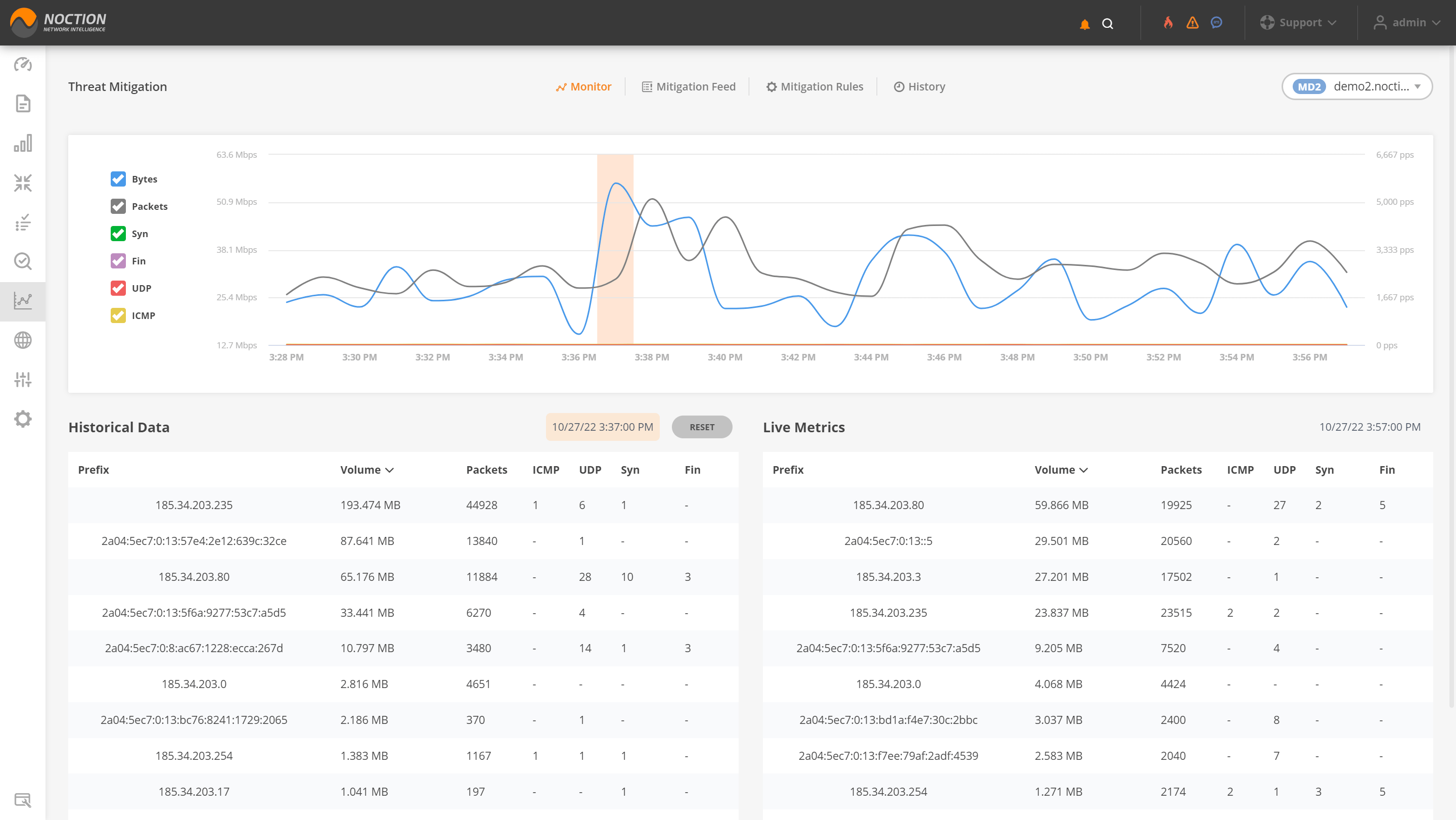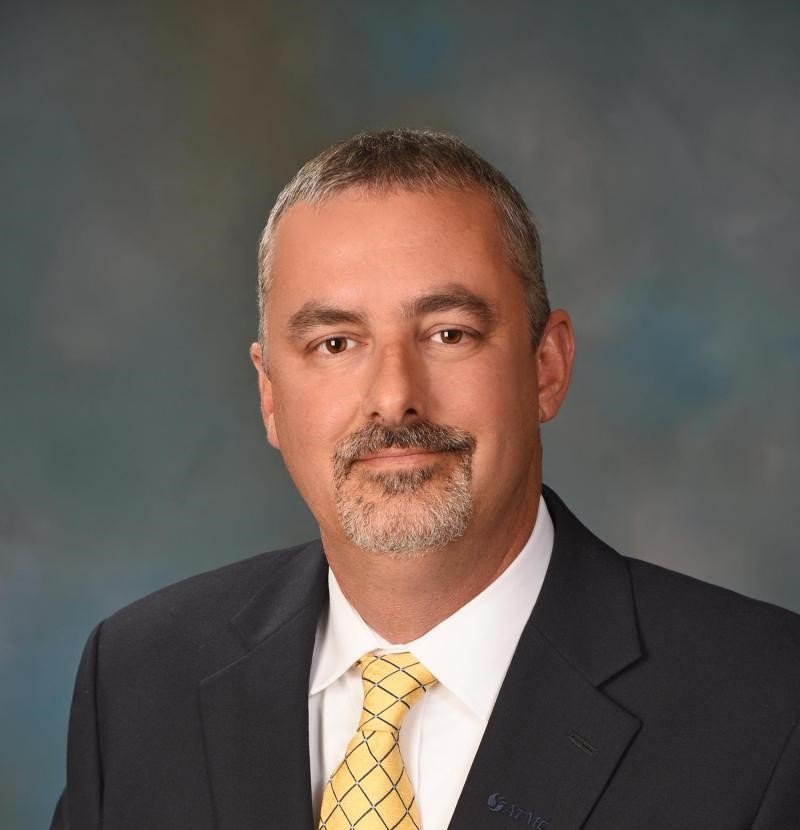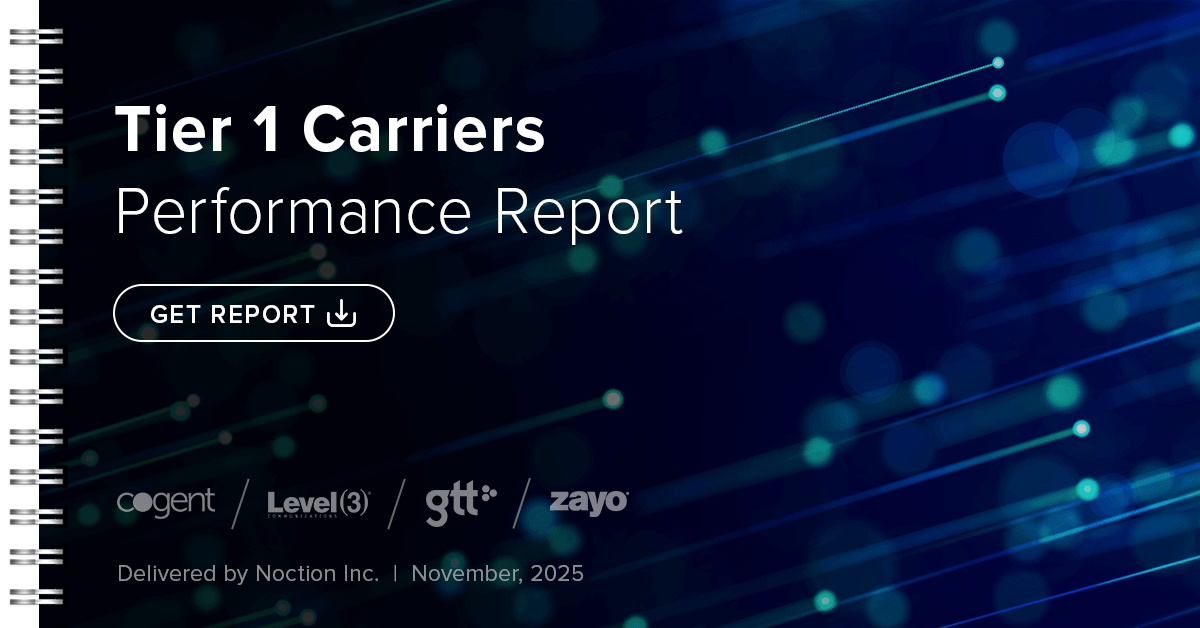Optimize BGP ROUTING
Enable objective, automated, and fast BGP routing optimization across the board, for inbound, outbound, and transiting traffic. IRP automatically determines which traffic needs to be rerouted, evaluates alternative routes, and applies timely improvements.
Optimize BGP ROUTING
Enable objective, automated, and fast BGP routing optimization across the board, for inbound, outbound, and transiting traffic. IRP automatically determines which traffic needs to be rerouted, evaluates alternative routes, and applies timely improvements.
Automate BGP Network Management
Reduce engineering time and the risk of human errors by automating the BGP management process. Dynamically tune routing paths via the standard BGP routing protocol to provide a scalable mechanism for obtaining your business objectives.
Automate BGP Network Management
Reduce engineering time and the risk of human errors by automating the BGP management process. Dynamically tune routing paths via the standard BGP routing protocol to provide a scalable mechanism for obtaining your business objectives.
Bypass Congestion and Outages
IRP automatically detects and confirms network congestion and outage problems and always reroutes traffic through the best-performing path, overcoming the Internet’s “first and middle-mile” issues.
Bypass Congestion and Outages
IRP automatically detects and confirms network congestion and outage problems and always reroutes traffic through the best-performing path, overcoming the Internet’s “first and middle-mile” issues.
Minimize loss and latency
Reduce engineering time and the risk of human errors by automating the BGP management process. Dynamically tune routing paths via the standard BGP routing protocol to provide a scalable mechanism for obtaining your business objectives.
Minimize loss and latency
Reduce engineering time and the risk of human errors by automating the BGP management process. Dynamically tune routing paths via the standard BGP routing protocol to provide a scalable mechanism for obtaining your business objectives.
Monitor and Troubleshoot Your Network
IRP makes troubleshooting a much faster process, detecting, diagnosing, and resolving network issues. The platform offers real-time performance data and alerts users, sending out notifications when necessary.
Monitor and Troubleshoot Your Network
IRP makes troubleshooting a much faster process, detecting, diagnosing, and resolving network issues. The platform offers real-time performance data and alerts users, sending out notifications when necessary.
Leverage Network Bandwidth Costs
Balance network traffic and keep bandwidth levels below the preset thresholds for all your providers at all times. Noction IRP monitors bandwidth levels for both outbound and inbound routes and automatically adjusts traffic distribution to the shape you need.
Leverage Network Bandwidth Costs
Balance network traffic and keep bandwidth levels below the preset thresholds for all your providers at all times. Noction IRP monitors bandwidth levels for both outbound and inbound routes and automatically adjusts traffic distribution to the shape you need.
detect and mitigate DDOS attacks
Take advantage of IRP’s Threat Mitigation capability to better understand and automatically mitigate the effects of the Distributed Denial of Service (DDoS) attacks.
detect and mitigate DDOS attacks
Take advantage of IRP’s Threat Mitigation capability to better understand and automatically mitigate the effects of the Distributed Denial of Service (DDoS) attacks.
What is Noction IRP and how does it work?
Noction IRP is a BGP network optimization platform for high availability and low latency, designed to dramatically improve your network performance.
IRP facilitates detection, diagnosis, and automatic resolution of performance issues. It delivers real-time views and dashboards that allow users to visually track network performance and receive timely alerts & notifications when specific problems occur.
When embed in a network, IRP gets a complete or partial copy of the traffic from port mirroring or a Netflow/Sflow feed from the router (depending on the mode it was configured to operate). IRP then passively analyses traffic for specific network anomalies and actively measures relevant prefixes for packet loss, latency and jitter. The platform gathers these metrics by issuing active probing through all available provider links. It sends this actively gathered data to the platform Core, which computes a performance or a cost-improved routing policy for the network. The Noction IRP BGPd then announces the improved route to the networks’ edge routers via a typical BGP session.
IRP is non-intrusive and sits outside of the data path, so there is no possibility that it will impact network throughput or performance. If IRP gets turned off or fails, the routers will fall back to the standard BGP routes received from the providers. The platform can also operate in a BGP non-intrusive mode, where it only runs active probes, gathers data, and reports on potential improvements, without applying them.
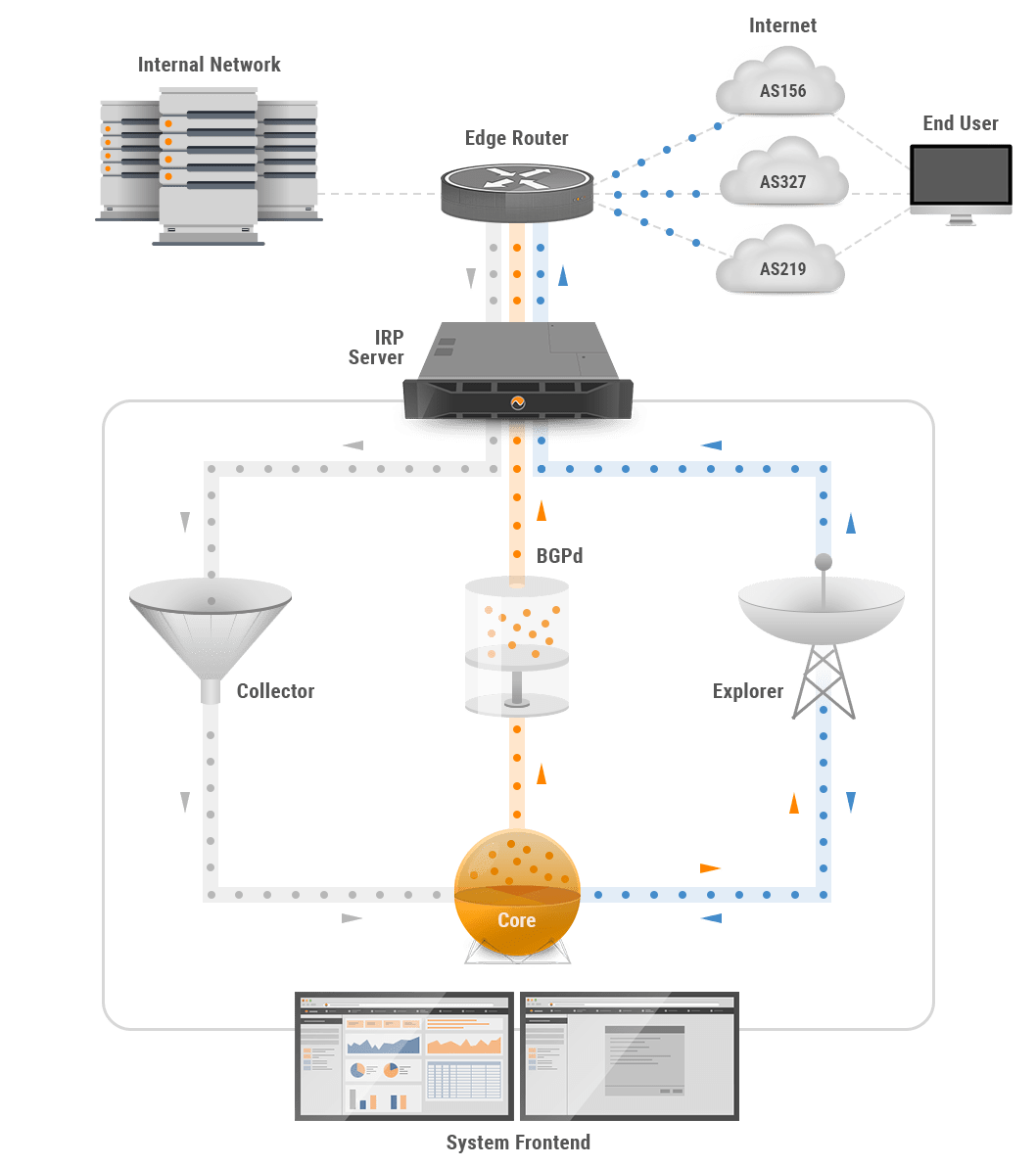
BGP – the protocol that runs the Internet
Border Gateway Protocol (BGP) is a distance-vector routing protocol that is used on the Internet and allows information sent from one Internet point to another to find the right path and reach the recipient.
Protocol terminology:
When it comes to BGP, the first thing to explain is the concept of an Autonomous System (AS). An Autonomous System is a collection of routing points and the connection between them, united by a common interaction policy, which allows this system to exchange data with the nodes that are outside of the system.
An Autonomous System is characterized by a 16-bit or 32-bit Autonomous System Number (ASN) and a pool of IP addresses. Both are issued by IANA (Internet Assigned Numbers Authority), which in its turn delegates control over the distribution of ASNs and other Internet resources to regional registrars.
The connectivity of Autonomous Systems is achieved through static or dynamic routing.
Static routing is quite simple and requires an engineer to manually set the route to the nearest neighbor. In practice, however, connecting even 10 routers to each other becomes a real challenge.
Therefore, dynamic routing was invented for large networks, where devices automatically share information about the available routes with each other and adjust to any topology changes.
Dynamic routing protocols are classified according to the two main characteristics:
1) The way the protocol works in relation to the Autonomous Systems:
- IGP (Interior Gateway Protocol) – working inside the Autonomous System. These include: RIP, OSPF, EIGRP, IS-IS
- EGP (Exterior Gateway Protocol) – working outside of the Autonomous Systems and ensuring their connectivity. This includes BGP
2) The protocol’s operation algorithm:
- Distance-Vector – knows the routes only to the nearest neighbors and exchanges a routing table with them. (RIP, EIGRP)
- Link State – knows the entire topology of the network and exchanges the topology table with its neighbors (OSPF, IS-IS)
Clearly, BGP can not be a Link State protocol. Just imagine how many Autonomous Systems are out there on the Internet! Any router will simply fail if it receives this great amount of information.
Thus, BGP is a distance-vector exterior gateway protocol that connects Autonomous Systems. A simplified scheme looks something like this:

Since BGP is entrusted with the task of connecting Autonomous Systems throughout the Internet, it must be very reliable. Nevertheless, the protocol does not have a reliable transport method. Instead, it leverages TCPs reliability to ensure that the messages and updates are received. At the very beginning, the BGP router initiates the establishment of a TCP session on port 179 to its neighbor. The standard exchange of SYN and ACK takes place.
BGP connections must be carefully coordinated by the administrators of the Autonomous Systems willing to connect. If, for instance, the administrator of AS20 has initiated the BGP process on BR2 (Border Router), specifying BR1 and its ASN as a neighbor, but the AS30 administrator has not done anything, the TCP session will not be established and the systems will remain disconnected. Moreover, the following conditions must be met:
- port 179 is not blocked by the ACL (Access Control List)
- routers can ping each other
- the ASN of the distant Autonomous System was specified correctly
- RouterIDs do not match
If the TCP session is established successfully, the BGP routers start exchanging OPEN messages, in which they report their ASN, RouterID, and Hold time. Hold timer is the time during which the TCP session will be supported. In case the conditions listed above are not met, for example, the information about the AS number does not match, then the router receiving the incorrect ASN will notify its neighbor by sending a NOTIFICATION message and will end the TCP session.
If all the conditions are met, the routers start sending each other KEEPALIVE messages with a certain interval, meaning they confirm the parameters accepted in OPEN and send the notification “I’m still alive”.
Finally, the routers can begin to exchange routing information using the UPDATE message.
The structure of this message consists of the following parts:
- Unfeasible routes length indicates the length of the Withdrawn Routes field
- Withdrawn routes contain IP address prefixes for the routes being withdrawn
- Total path attribute length indicates the length of the path attributes field
- Path attributes contain the properties of the routes: the path origin, preference for the route, the multi-exit discriminator (MED), as well as the information about confederations, communities, aggregation, and route reflection.
- NRLI (Network Layer Reachability Information) contains the information about the networks which are to be added to the routing table – the IP address of the network and its mask.
The UPDATE message is transmitted each time one of the routers receives information about the new networks, while the KEEPALIVE message throughout the entire TCP session.
NOTIFICATION Message is sent when an error is detected. The BGP connection closes immediately after the message is sent. Such a message includes the error code, its subcode, and also data related to the error.
BGP is most certainly the most complex IP routing protocol currently deployed on the internet. The information above is aimed to provide only a basic understanding of how the protocol works. For more in-depth information please consult our Blog or the Resource Center guides.
IRP is Loved ♥️ by network pros and IT enthusiasts
But don’t take our word for it. Take a closer look at how networks of various sizes are driving success with Noction IRP.

IRP has been a great asset to our business. It is paying for itself by saving us money on overages and providing optimal performance for our customers in outbound routing. It is like a little robot that works for us 24/7.

Noction gave us the three requirements that we seek with all solutions: optimization, scalability, and extended SLA. IRP provides better ISP management by automatically choosing the best path for all BGP routes in real-time.

IRP is saving us man-hours and is providing peace of mind, knowing that our internet links are not getting saturated, with inbound and outbound traffic being distributed across all our links as improvements are being made.
Related White Papers

White Paper
Learn how IRP can help you boost network performance and reduce operational costs by intelligently rerouting traffic across the internet.

Product Datasheet
This document provides detailed software and hardware technical specifications of the Noction Intelligent Routing Platform.

ROI White Paper
Thorough research unveils the return on investment a Service Provider achieves as a result of deploying Noction IRP in its infrastructure.


